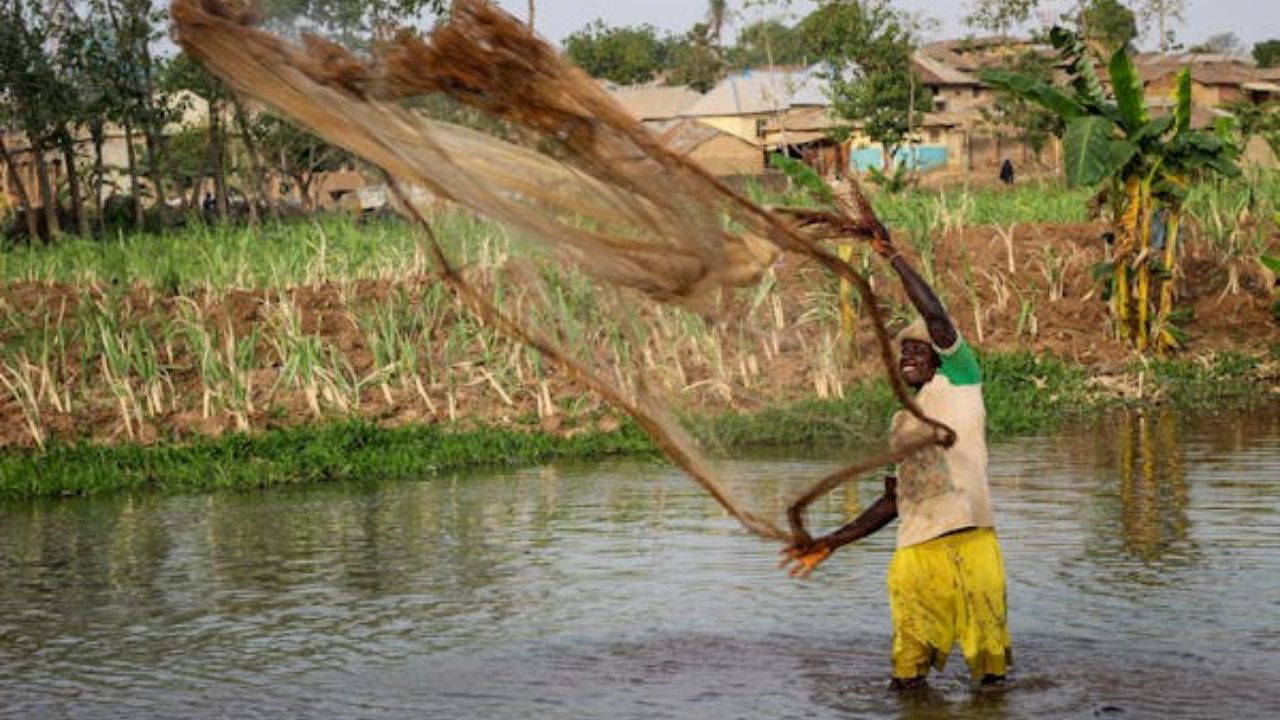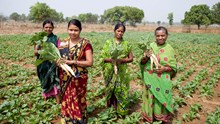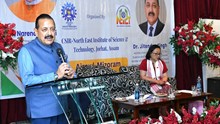
Fish farming, also known as aquaculture, involves the cultivation of fish in controlled environments such as ponds, tanks, or enclosures. This practice is one of the oldest professions and has made significant contributions to global food security, nutritional enhancement, and economic development. In India, the potential for fish farming is vast, thanks to its extensive coastline, rivers, and numerous inland water bodies.
The country has tremendous scope to expand this industry, which is a key component of the Blue Revolution. The Blue Revolution aims to boost fish production and improve the livelihoods of farmers, supporting sustainable growth in the aquaculture sector.
Why Choose Fish Farming?
Farmers are drawn to fish farming due to its high profitability. In comparison to many conventional agricultural methods, it provides higher returns on investment. It is essential to maintaining nutritional and food security. Omega-3 fatty acids, protein, and other minerals are all abundant in fish.
Additionally, it creates jobs for millions of people working in fish farming and associated sectors that offer stable means of subsistence. The practice also allows efficient land and water use that makes it ideal for marginal lands and water bodies unsuitable for crop farming. Moreover, the government actively supports fish farming through various schemes and subsidies, further encouraging its adoption across India.
Types of Fish Farming
Fish farming can be broadly categorized into two types:
-
Freshwater Fish Farming: Freshwater farming Involves raising fish in ponds, lakes, and reservoirs. Popular species of freshwater are Catla, Rohu, Mrigal, and Tilapia.
-
Marine Fish Farming: It is Conducted in coastal areas, involving species like shrimp, sea bass, and pomfret.
Steps to Start Fish Farming
- Selecting a Suitable Site
For fish farming a good location is crucial for success. Location factors that need to be considered include soil type, water availability, quality, and accessibility to markets. The site should have a proper drainage system and be free from pollutants.
- Constructing the Pond
Pond preparation is an essential step. Farmers can either use existing water bodies or construct artificial ponds. The ideal pond size can vary. A depth of 4-6 feet is recommended for proper fish growth. Ponds should be lined with clay or synthetic liners to prevent seepage.
- Choosing Fish Species
The right selection of fish is important when choosing Fish Farming, The selection of the right species depends on climate conditions, market demand, and profitability. The commonly cultivated fishes are Indian Major Carps (IMCs) like Rohu, Catla, and Mrigal. Exotic species such as Tilapia and Pangasius are also gaining popularity due to their fast growth rates and high market value.
- Seed Selection and Stocking
High-quality fish seeds (fingerlings) are crucial for better survival rates and production. Farmers should purchase seeds from certified hatcheries. Stocking density should be maintained based on species requirements to avoid overcrowding and ensure healthy growth.
- Feeding Management
Fish require a balanced diet for optimal growth. Commercial fish feeds containing proteins, vitamins, and minerals can be used. Farmers can also supplement diets with kitchen waste, rice bran, and organic matter.
- Water Quality Management
Water maintenance is a crucial step for fish farming. The best quality of water is essential for fish health and productivity. The aquaculturist should regularly check for oxygen levels, pH, ammonia, and temperature in the water. The addition of lime, organic fertilizers, and aerators helps maintain a healthy aquatic environment.
- Disease Prevention and Control
The fish are commonly fish infected by bacterial, viral, or fungal infections. Preventive measures should be taken to protect the fish. The measures include maintaining water quality, avoiding overcrowding, and using proper nutrition. The fish that are infected should be isolated and treated with recommended medicines.
- Harvesting and Marketing
Harvesting is done when fish reach marketable size. This size is usually reached within 6-12 months. Techniques like netting and draining are used for collection. To ensure better pricing, Farmers should establish connections with local markets, wholesalers, and processing units.
Role of Government and Krishi Vigyan Kendras (KVKs)
Government initiatives like the Pradhan Mantri Matsya Sampada Yojana (PMMSY) support fish farmers. They support through financial aid, training, and infrastructure development. KVKs also play a significant role in educating farmers. They educate them about modern fish farming techniques, disease management, and value addition.
Economic Potential of Fish Farming
Proper management and quality inputs will help the financial viability of fish farming. A well-maintained fish pond may yield around 3200 kg per unit area. The financial net return of Rs. 4,16,000 per hectare per year. Improvements in technologies, proper feeding, and control of diseases enhance profits significantly.
Fish farming is an excellent avenue for farmers to achieve alternative income sources. It gives food security, provides jobs, and boosts national economic growth. With the continuance of support from government schemes, KVKs, and scientific advancement, fish farming has the potential to revolutionize rural livelihoods. Interested farmers who are willing to spend time and effort to reap long-term benefits can produce a promising and sustainable enterprise.
















